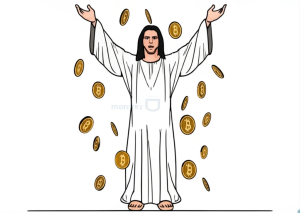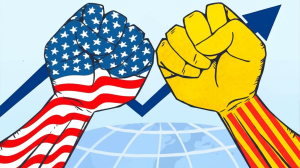
The “Big, Beautiful Bill” has emerged as one of the most polarizing pieces of legislation in recent U.S. history. Signed into law by President Trump, this sweeping package of tax cuts, spending reductions, and policy changes has ignited fierce debate across the political spectrum. Proponents argue that the bill will stimulate economic growth and reduce government debt, while critics warn of its potential to exacerbate income inequality and undermine social programs. The bill’s journey through Congress was marked by intense negotiations, intra-party squabbles, and vehement opposition, reflecting the deep divisions that persist in American politics.
At its core, the “Big, Beautiful Bill” is a multifaceted piece of legislation designed to reshape the economic landscape. The centerpiece of the bill is the extension of tax cuts first enacted in 2017. These cuts, which lowered individual and corporate tax rates, were initially temporary, but the new bill makes them permanent. Supporters of this provision argue that lower taxes will encourage businesses to invest, create jobs, and boost wages. However, critics contend that the tax cuts disproportionately benefit the wealthy and will lead to a significant increase in the national debt.
Beyond tax cuts, the bill also includes substantial spending reductions, particularly in areas like Medicaid and the Supplemental Nutrition Assistance Program (SNAP). Proponents of these cuts argue that they are necessary to promote fiscal responsibility and reduce government debt. They point to the growing national debt as evidence that the government must rein in spending to avoid long-term economic instability. However, critics argue that these cuts will disproportionately harm vulnerable populations, including low-income families, the elderly, and people with disabilities. They warn that the cuts could lead to increased poverty, food insecurity, and health disparities.
The bill also includes a range of other policy changes, from modifications to deductions for highly compensated employees to changes in charitable giving and border security. These provisions reflect the bill’s ambitious scope and its aim to address a wide range of issues. However, the inclusion of such diverse provisions has also made the bill a target for criticism, with opponents arguing that it is a hodgepodge of unrelated policies that will have unintended consequences.
One of the most contentious aspects of the “Big, Beautiful Bill” is its projected impact on the national debt. Independent analyses estimate that the bill will add over $3 trillion to the national debt over the next decade. Critics argue that this increase in debt will jeopardize the nation’s long-term fiscal health and could lead to economic instability. They point to the fact that the bill’s tax cuts and spending increases are not offset by corresponding revenue increases or spending reductions, raising concerns about the sustainability of the bill’s provisions.
Supporters of the bill counter that the tax cuts will spur economic growth, generating increased tax revenues that will offset the costs of the bill. They argue that a growing economy will create jobs, boost wages, and ultimately reduce the national debt. However, this argument relies on the assumption that the tax cuts will indeed lead to sustained economic growth, an assumption that some economists question. Skeptics point to historical evidence that suggests tax cuts do not always lead to significant economic growth and may instead exacerbate income inequality.
The debate over the “Big, Beautiful Bill” has drawn criticism from a diverse array of individuals and organizations, including prominent business leaders like Elon Musk. Musk, the CEO of Tesla and SpaceX, has been particularly vocal in his opposition to the bill, labeling it “political suicide” and a “disgusting abomination.” Musk’s opposition stems from his concerns about the bill’s impact on the national debt and its potential to stifle innovation. He has argued that the bill’s tax cuts will disproportionately benefit the wealthy, while its spending cuts will harm vital social programs. He has also expressed concern that the bill will create an uneven playing field for businesses, favoring established corporations over innovative startups.
The clean energy industry has also voiced concerns about the “Big, Beautiful Bill,” particularly regarding last-minute changes that could undermine the sector’s growth. These changes, reportedly made during the bill’s final stages in the Senate, have stunned clean energy advocates, who fear they could jeopardize investments in renewable energy projects and hinder the transition to a cleaner economy. The specific details of these last-minute changes remain somewhat unclear, but reports suggest they may involve modifications to tax credits or subsidies for renewable energy projects. Such changes could significantly impact the economic viability of these projects, potentially leading to job losses and reduced investment in the clean energy sector.
The concerns raised by the clean energy industry highlight the complex and often conflicting interests at play in the debate over the “Big, Beautiful Bill.” While the bill’s proponents argue that it will stimulate economic growth across the board, critics contend that it will benefit certain industries and sectors at the expense of others, potentially hindering the development of sustainable and environmentally friendly technologies.
The “Big, Beautiful Bill” represents a significant milestone in President Trump’s presidency, a sweeping piece of legislation that will reshape the American economy and redefine the role of government. Its passage marks a triumph for the Trump administration and its conservative allies, who see it as a necessary step towards promoting economic growth and fiscal responsibility. However, the bill’s legacy remains uncertain. Its potential to exacerbate income inequality, balloon the national debt, and undermine vital social programs has drawn widespread criticism and sparked fierce opposition. Whether the bill will ultimately deliver on its promises of economic prosperity or lead to unintended consequences remains to be seen. One thing is certain: The “Big, Beautiful Bill” will continue to be a subject of debate and scrutiny for years to come, shaping the political and economic landscape of the United States for generations.





